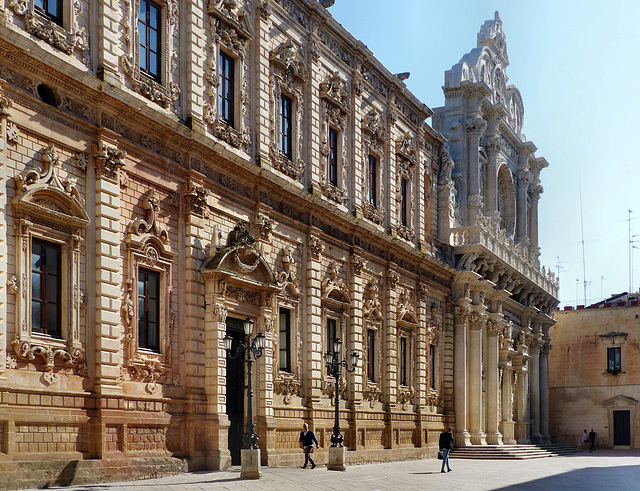Lecce - Basilica di Santa Croce
Lecce - Basilica di Santa Croce
Lecce - Basilica di Santa Croce
Torre dell'Orso - Adriatic Sea
Torre dell'Orso - Adriatic Sea
Torre dell'Orso - Hotel Belvedere Salento
Torre dell'Orso - Hotel Belvedere Salento
Otranto
Otranto - PharmaShop24
Otranto - Castello Aragonese
Otranto - Harbour
Otranto - Basilica bizantina di San Pietro
Otranto - Cattedrale di Otranto
Otranto - Cattedrale di Otranto
Otranto - Cattedrale di Otranto
Otranto - Cattedrale di Otranto
Otranto - Cattedrale di Otranto
Otranto - Cattedrale di Otranto
Otranto - Cattedrale di Otranto
Otranto - Cattedrale di Otranto
Otranto - Cattedrale di Otranto
Otranto - Cattedrale di Otranto
Otranto - Cattedrale di Otranto
Lecce - Duomo di Lecce
Lecce - Duomo di Lecce
Lecce - Santa Maria della Grazia
Lecce - Sant'Irene
Lecce - Sant'Irene
Lecce - Chiesa del Gesù
Lecce - Chiesa del Gesù
Lecce - Amphitheatre
Lecce - Santa Maria della Porta
Lecce - Porta Napoli
Lecce - San Niccolò dei Greci
Brindisi - Trattoria La Cucina
Brindisi - Piazza Mercato
Brindisi - Castello alfonsino
Brindisi - Via Appia
Brindisi - Via Appia
Brindisi - Museo Archeologico Ribezzo
Brindisi - Museo Archeologico Ribezzo
Brindisi - Cattedrale di Brindisi
Brindisi - Cattedrale di Brindisi
Brindisi - Cattedrale di Brindisi
Brindisi - San Giovanni al Sepolcro
Location
Lat, Lng:
Lat, Lng:
You can copy the above to your favourite mapping app.
Address: unknown
Lat, Lng:
You can copy the above to your favourite mapping app.
Address: unknown
See also...
Keywords
Authorizations, license
-
Visible by: Everyone -
All rights reserved
-
63 visits
Lecce - Palazzo dei Celestini


A legend tells, that a city called Sybar existed at the time of the Trojan War. It was conquered by the Romans in the 3rd century BC, receiving the new name of Lupiae.
After the fall of the Western Roman Empire, Lecce was sacked by the Ostrogoth troops of king Totila. In 549 it was taken by Byzantium and remained part of the Eastern Roman Empire for five centuries, interrupted by brief invasions by the Saracens, Longobards, Hungarians and Slavs.
After the Norman conquest in the 11th century, Lecce regained commercial and political importance, flourishing in the subsequent Hohenstaufen and Angevine rule. From the 15th century, Lecce was one of the most important cities of southern Italy, and, starting in 1630, it developed into a centre of Baroque architecture. This was made possible by the soft tuff stone found in the area, perfect for that architecture.
-
Walter VI, Count of Brienne (and Lecce), founded a monastery here in 1352 for the Celestines, a kind of branch of the Benedictines.
The erection of the large Baroque complex consisting out of the "Palazzo dei Celestini" and the annexed "Basilica di Santa Croce" started in 1549. The long facade carried 1659-1695 was the work of the architects Giuseppe Zimbalo (aka "Zingarello") and Giuseppe Cino.
After the suppression of the order in 1807, the monastery became a government palace. It currently houses the offices of the Prefecture and the Province.
After the fall of the Western Roman Empire, Lecce was sacked by the Ostrogoth troops of king Totila. In 549 it was taken by Byzantium and remained part of the Eastern Roman Empire for five centuries, interrupted by brief invasions by the Saracens, Longobards, Hungarians and Slavs.
After the Norman conquest in the 11th century, Lecce regained commercial and political importance, flourishing in the subsequent Hohenstaufen and Angevine rule. From the 15th century, Lecce was one of the most important cities of southern Italy, and, starting in 1630, it developed into a centre of Baroque architecture. This was made possible by the soft tuff stone found in the area, perfect for that architecture.
-
Walter VI, Count of Brienne (and Lecce), founded a monastery here in 1352 for the Celestines, a kind of branch of the Benedictines.
The erection of the large Baroque complex consisting out of the "Palazzo dei Celestini" and the annexed "Basilica di Santa Croce" started in 1549. The long facade carried 1659-1695 was the work of the architects Giuseppe Zimbalo (aka "Zingarello") and Giuseppe Cino.
After the suppression of the order in 1807, the monastery became a government palace. It currently houses the offices of the Prefecture and the Province.
Ernest CH has particularly liked this photo
- Keyboard shortcuts:
Jump to top
RSS feed- Latest comments - Subscribe to the comment feeds of this photo
- ipernity © 2007-2024
- Help & Contact
|
Club news
|
About ipernity
|
History |
ipernity Club & Prices |
Guide of good conduct
Donate | Group guidelines | Privacy policy | Terms of use | Statutes | In memoria -
Facebook
Twitter

Sign-in to write a comment.